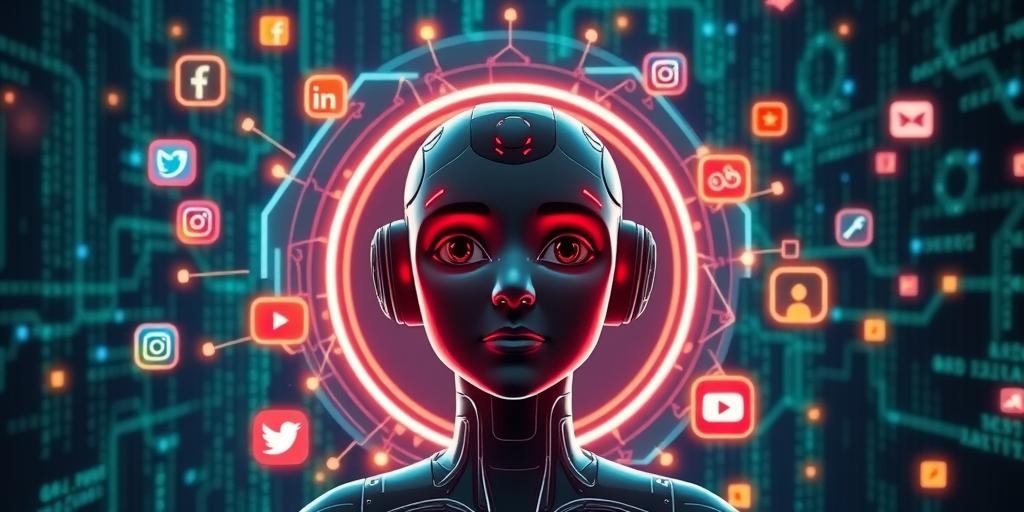AI Influencers: A Novelty or the Norm in 2025?
Artificial intelligence (AI) is rapidly transforming numerous aspects of our lives, and the world of social media is no exception. One of the most intriguing developments is the rise of AI influencers. These virtual personalities are designed to engage audiences, promote products, and shape opinions, often without any human involvement beyond their initial creation. As we look ahead to 2025, it’s crucial to examine whether AI influencers will remain a novelty or become a mainstream presence in the digital landscape.
The Rise of AI Influencers
AI influencers are computer-generated characters that have gained popularity on platforms like Instagram, TikTok, and YouTube. They are often created with realistic features and personalities, allowing them to connect with audiences in ways that mimic human influencers. Some notable examples include Lil Miquela, Shudu Gram, and Imma, each boasting millions of followers.
These AI entities offer several advantages for brands and marketers:
- Control: Brands have complete control over the AI influencer’s messaging, appearance, and behavior.
- Cost-Effectiveness: While there are upfront costs associated with creating and maintaining an AI influencer, they can be more cost-effective in the long run compared to human influencers.
- Availability: AI influencers are available 24/7 and can engage with audiences across different time zones without fatigue.
- Consistency: AI influencers consistently maintain their brand image and messaging, reducing the risk of controversies or missteps.
Current Trends in AI Influencer Marketing
Several trends indicate the growing integration of AI influencers in marketing strategies:
- Virtual Brand Ambassadors: Companies are increasingly using AI influencers as brand ambassadors to promote products and services. For instance, Lil Miquela has partnered with brands like Prada and Dior.
- Personalized Content: AI can analyze user data to create personalized content that resonates with specific audiences, enhancing engagement and conversion rates.
- Interactive Experiences: AI influencers are being used to create interactive experiences, such as virtual events and Q&A sessions, providing unique opportunities for audience interaction.
- Niche Markets: AI influencers are emerging in niche markets, catering to specific interests and demographics, such as gaming, fashion, and technology.
Factors Influencing Adoption by 2025
Several factors will determine whether AI influencers become the norm by 2025:
- Technological Advancements: Continued improvements in AI technology will enhance the realism and sophistication of AI influencers, making them more appealing to audiences.
- Consumer Acceptance: Public perception and acceptance of AI influencers will play a crucial role. As consumers become more familiar with these virtual personalities, their willingness to engage with them will likely increase.
- Ethical Considerations: Addressing ethical concerns related to transparency, authenticity, and potential deception is essential. Clear guidelines and regulations may be needed to ensure responsible use of AI influencers.
- Economic Factors: The cost-effectiveness and ROI of using AI influencers compared to human influencers will drive adoption. Brands will need to assess the value proposition and potential benefits carefully.
Potential Challenges and Criticisms
Despite the potential benefits, AI influencers face several challenges and criticisms:
- Lack of Authenticity: Some consumers may perceive AI influencers as inauthentic and lacking genuine emotion, which could limit their ability to build trust and credibility.
- Ethical Concerns: The use of AI influencers raises ethical questions about transparency, disclosure, and the potential for manipulation.
- Job Displacement: The rise of AI influencers could potentially displace human influencers and content creators, leading to economic and social implications.
- Technical Limitations: Current AI technology has limitations in terms of creativity, spontaneity, and adaptability, which could hinder the ability of AI influencers to respond to unexpected situations.
The Future Landscape
Looking ahead to 2025, AI influencers are likely to become more sophisticated and integrated into marketing strategies. While they may not completely replace human influencers, they will undoubtedly play a significant role in shaping the future of social media.
- Hybrid Models: We may see the emergence of hybrid models that combine the strengths of both AI and human influencers, leveraging AI for content creation and personalization while retaining the authenticity and emotional connection of human influencers.
- AI-Powered Content Creation: AI will increasingly be used to generate content for human influencers, enhancing their efficiency and creativity.
- Virtual Assistants: AI influencers could evolve into virtual assistants that provide personalized recommendations, customer support, and other services.
Conclusion
As we approach 2025, the question of whether AI influencers will be a novelty or the norm remains open. While challenges and criticisms persist, the potential benefits of control, cost-effectiveness, and consistency make AI influencers an attractive option for brands. By addressing ethical concerns, enhancing technological capabilities, and fostering consumer acceptance, AI influencers could very well become a mainstream presence in the digital landscape, coexisting alongside their human counterparts.
